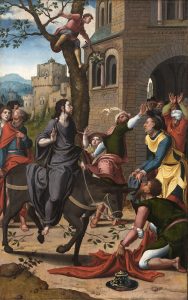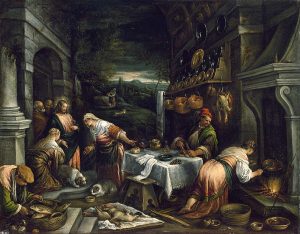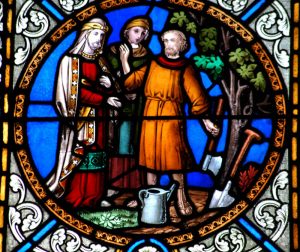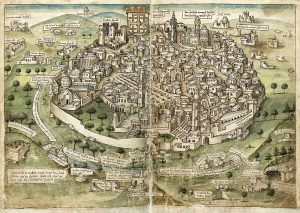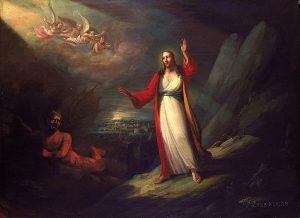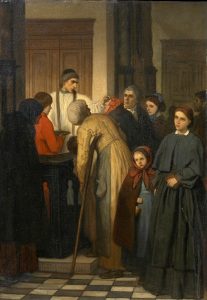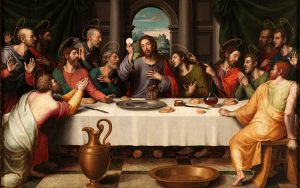Illuminations on the Lectionary readings for Feb. 26, 2023 (Lent 1A)
First Reading: Genesis 2:15-17; 3:1-7
Sunday’s Lectionary readings open the Lenten season with scriptural views of temptation and sin.
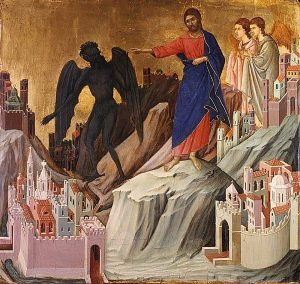
The Temptation on the Mount, (1308-1311). Tempera painting on wood by Duccio di Buoninsegna (1260–1318), the Frick Collection, New York City. (Click image to enlarge)
Our first reading picks up the creation legend just as Eve and Adam submit to temptation and eat the fruit that God had told them not to touch. God had warned them that eating the fruit would make them vulnerable to death. But even that was not enough to turn them away from the crafty serpent’s temptation, the promise that eating the forbidden fruit would give them Godlike knowledge of good and evil. Temptation was powerful; but so was the shame that followed when they realized they had broken their relationship with God.
Psalm: Psalm 32
Psalm 32 exalts the joy, relief and “glad cries of deliverance” that erupt from our souls when we accept God’s sure forgiveness. Indeed, God’s steadfast love surrounds all who trust enough to acknowledge our wrongdoing, the Psalmist sings. Joy comes when we confess our transgressions and accept God’s loving deliverance from the pain and guilt of being separated from God through sin.
Second Reading: Romans 5:12-19
In Paul’s letter to the Romans, which we will visit during much of Lent, Paul offers pastoral guidance to Gentile converts to Christianity and Jewish Christians returning from exile. Paul sketches a direct connection between the sin of Adam (curiously, he doesn’t mention Eve) and the divinity of Jesus Christ, the son of God. If Adam’s yielding to the temptation of the fruit brought death into the world, as Genesis tells us, then the incarnation of Jesus as fully human – one of us – restores justification and life for all through God’s gift of grace.
Gospel: Matthew 4:1-11
At the beginning of Epiphany, we heard Matthew’s account of the baptism of Jesus, when the voice of God declared him God’s beloved Son. Now we turn the page to discover that the Spirit led Jesus directly from the Jordan into the wilderness … to be tempted by the devil! This may seem a very strange thing for the Holy Spirit to do, but the Spirit works in mysterious ways. The devil – in a role something like the Satan, the adversary who tested Job’s faith – tries to test Jesus, too. The tempter tries three times to persuade Jesus to perform miracles to help himself. But Jesus stands strong, and at the end of 40 days of fasting, without giving in to temptation, Jesus orders the devil away.

